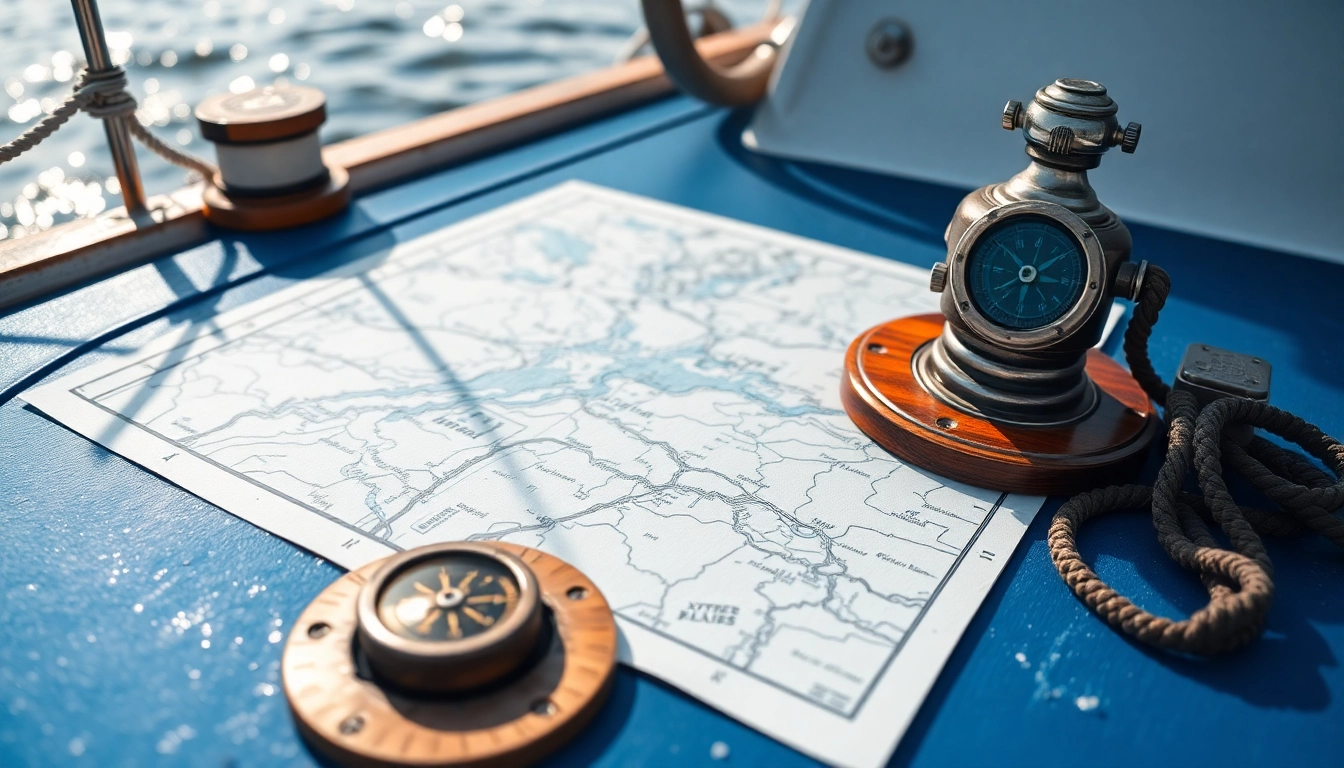
Understanding the Fundamentals of Marine Navigation and the Role of Celestial and Terrestrial Techniques
Navigation at sea has evolved significantly over centuries, from primitive celestial observations to sophisticated electronic systems. However, fundamental skills like Boots Versegelung — the art of traditional navigation — remain vital for safety and precision, especially when electronic aids fail or are unavailable. This article explores the core principles of seafaring navigation, with a focus on boots versegelung, its historical development, practical applications, and modern innovations that enhance navigational accuracy. Whether you’re an avid sailor, professional mariner, or a recreational boater, understanding these techniques can significantly improve your confidence and safety on the water.
Introduction to Boots Versegelung: Basic Principles and Significance
What is Boots Versegelung and Why Is It Critical?
Boots versegelung refers to the traditional method of determining a vessel’s position and course using visual observations, measurements, and calculations without relying solely on electronic navigation aids. This skill is essential because a failure of modern devices like GPS or radar can leave mariners temporarily disoriented, especially in challenging weather conditions or in remote areas. Mastering boots versegelung ensures continuity in navigation, enabling sailors to verify their position independently and make informed decisions to prevent accidents.
Historical Development of Maritime Navigation
The art of navigation dates back thousands of years, initially relying on celestial bodies such as the sun, moon, and stars. Early navigators used simple tools like the astrolabe and compass, progressing to more refined instruments like the sextant and chronometer during the Age of Exploration. These advancements allowed for more precise longitude and latitude measurements, shaping maritime routes and exploring new worlds. Despite technological progress, the fundamental techniques of visual observation and mathematical deduction have persisted, underscoring their importance as backup methods or supplementary navigation strategies.
Comparison with Modern Navigation Technology
While GPS, electronic charts, and autopilot systems dominate today’s navigation, they are susceptible to interference, malfunction, or environmental factors. Modern technology offers unmatched convenience and precision, but mariners trained in traditional techniques like boots versegelung maintain situational awareness and adaptability. The integration of celestial and terrestrial methods with electronic aids results in resilient and comprehensive navigation, essential for safe passage in all conditions.
Applying Boots Versegelung: Step-by-Step Practical Guide
Preparation and Planning Before Sailing
Effective navigation begins long before setting sail. Mariners must study nautical charts, examine weather forecasts, and identify fixed terrestrial objects and celestial cues. Preparation includes ensuring all necessary instruments—such as compasses, sextants, and protractors—are calibrated and functional. Establishing a clear plan for bearings, estimated positions, and expected courses helps streamline in-situ measurements and calculations.
Measuring and Calculating Bearings and Positions
Core to boots versegelung are accurate measurements of angles and directions to known objects or celestial bodies. Techniques involve:
- Using a compass to determine true bearings relative to magnetic north, accounting for declination.
- Employing a sextant to measure the angle between the horizon and celestial objects, enabling calculations of latitude and longitude.
- Applying triangulation methods by taking multiple bearings to fixed points (like lighthouses or distinctive landmarks) and plotting intersection points on nautical charts.
Analyzing and Plotting the Position on Nautical Charts
Once measurements are obtained, the mariner plots these data points onto the nautical chart. The intersection of plotted lines (stands lines or sighting lines) indicates the vessel’s approximate position. Repeated observations over time refine accuracy, allowing for corrections of course and speed. Accurate plotting relies on understanding chart scales, coordinate systems, and common errors inherent in manual methods.
Enhancing Navigation Accuracy: Practical Tips and Best Practices
Common Errors and How to Avoid Them
The most frequent mistakes include misreading instruments, neglecting to adjust for magnetic declination, and inaccurate timing of celestial observations. To mitigate these risks:
- Always verify instrument calibration before use.
- Cross-check bearings with multiple references when possible.
- Maintain precise timekeeping—handheld chronometers or synchronized clocks are indispensable.
Choosing Quality Manual Instruments
High-quality sextants, compasses, and charts are crucial for reliable readings. Modern digital devices can supplement manual tools, but understanding their manual counterparts is fundamental. For instance, a well-maintained sextant with clear graduations yields more accurate celestial measurements.
Integrating Traditional Techniques with Electronic Navigation
Dual navigation approaches increase safety margin. For example, using celestial sightings to verify GPS positions or employing terrestrial bearings to cross-validate electronic charts helps identify discrepancies promptly. This redundancy is vital in hazardous environments or during long voyages where equipment malfunction risks are heightened.
Challenges in Boots Versegelung and Their Solutions
Adverse Weather and Visibility Constraints
Fog, storms, or night conditions hinder visual observations. In these cases, mariners may rely on:
- Predictive techniques, such as estimating position based on known speed and course over time.
- Using emergency navigation lights or radar to identify landmarks.
- Having backup instruments like echo-sounders and radar-based positioning aids.
Instrument Maintenance and Calibration
Regularly servicing and calibrating tools ensures precision. Keep sextants and compasses protected from damage and environmental factors, and perform check-ups against known references before every voyage.
Training and Seafarer Skill Development
Practice is essential. Mariners should undertake regular training, simulate different scenarios, and participate in navigation workshops. Understanding historical navigation methods deepens insight and sharpens observational skills.
Future of Boots Versegelung: Innovations and Trends
Emerging Technologies and Measurement Methods
Advances like portable laser rangefinders, augmented reality overlays, and digital sextants are making manual measurements more precise and accessible. These innovations combine tradition with modern tech to streamline navigation tasks.
Automated Navigation Tools
Autonomous systems and AI-driven algorithms are beginning to assist or even replace manual calculations, offering real-time position updates based on multiple data sources. Yet, maintaining foundational skills remains crucial for oversight and emergency situations.
Future Trends in Marine Navigation
The integration of satellite-based augmentation systems with traditional navigation is expected to improve accuracy and reliability. Emphasis on redundancy, training, and resilience will ensure mariners remain capable in diverse scenarios.